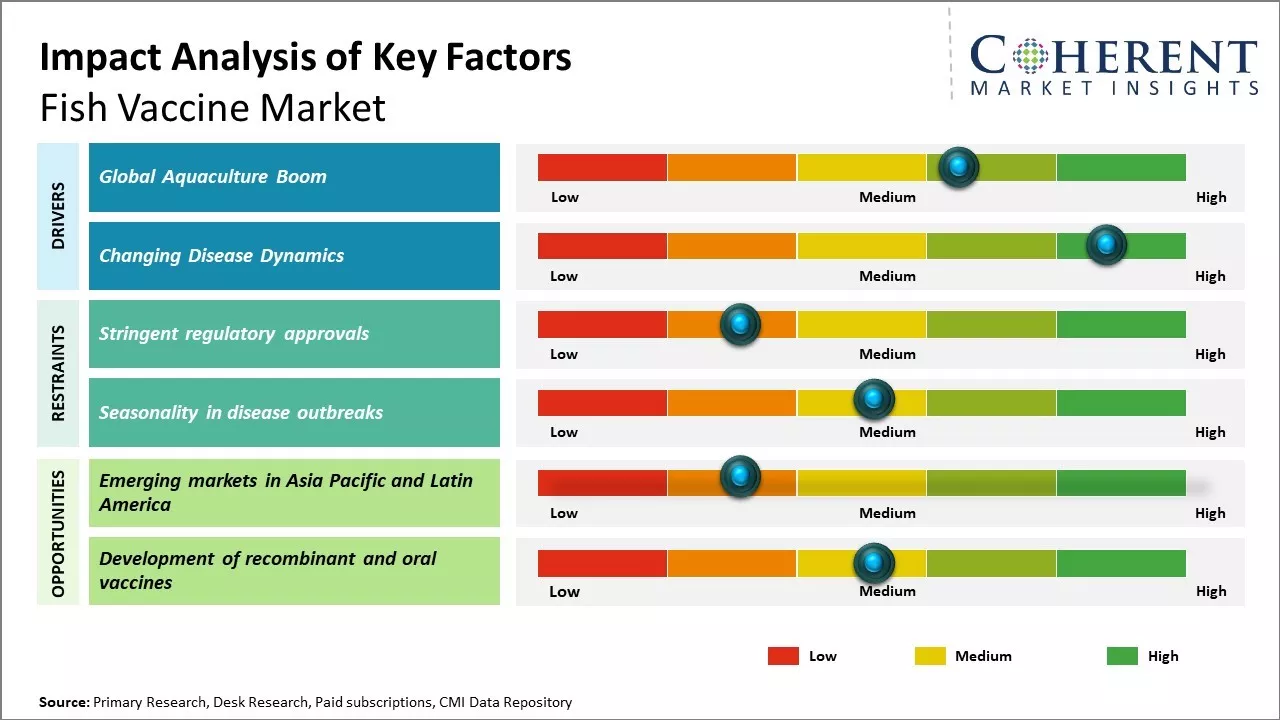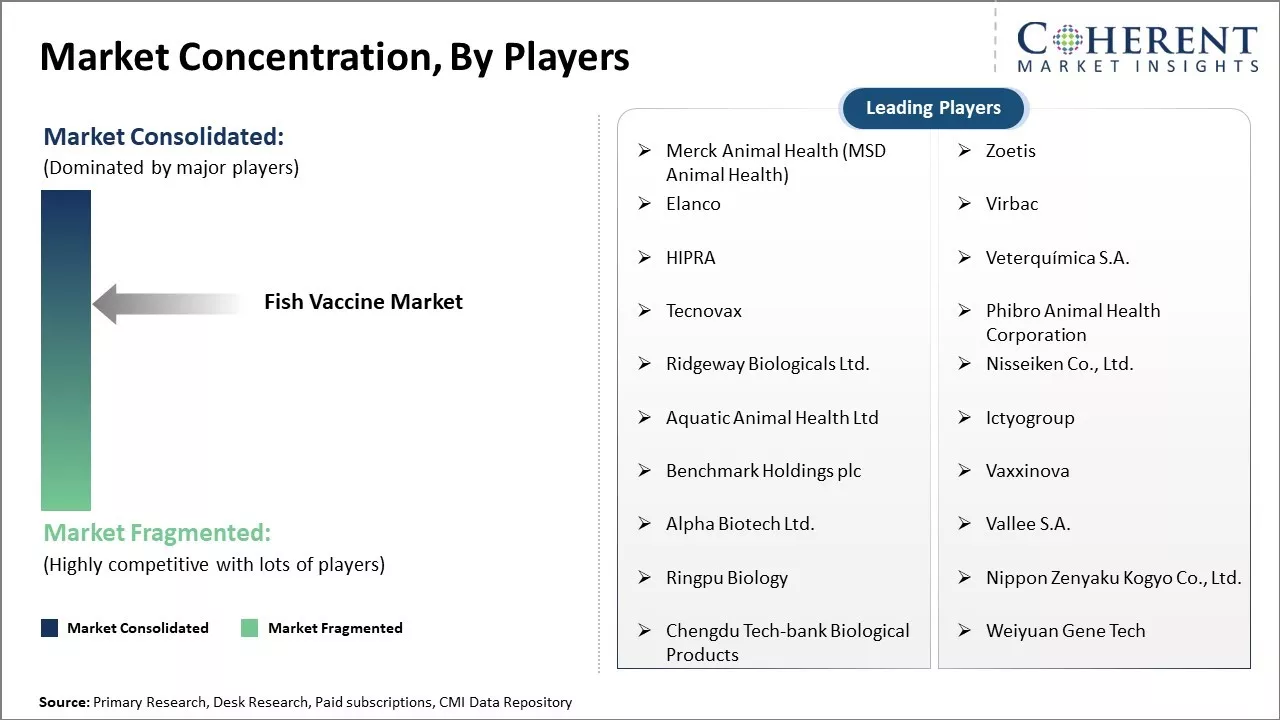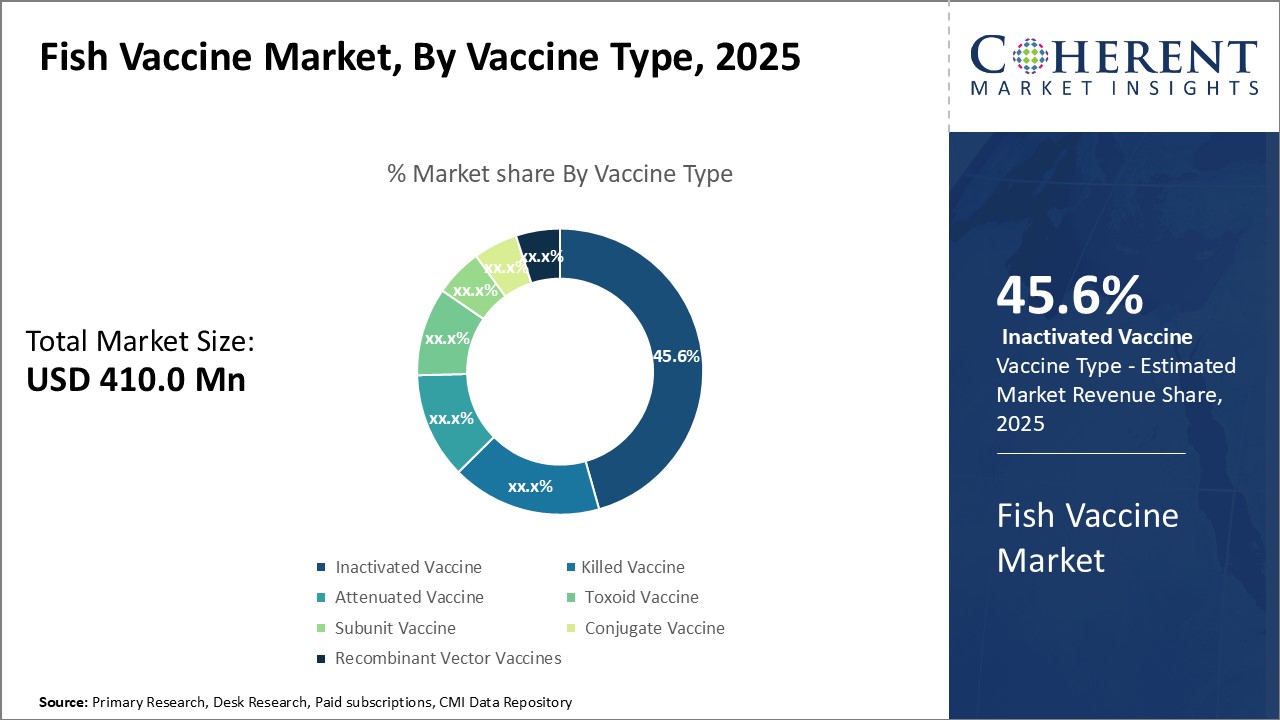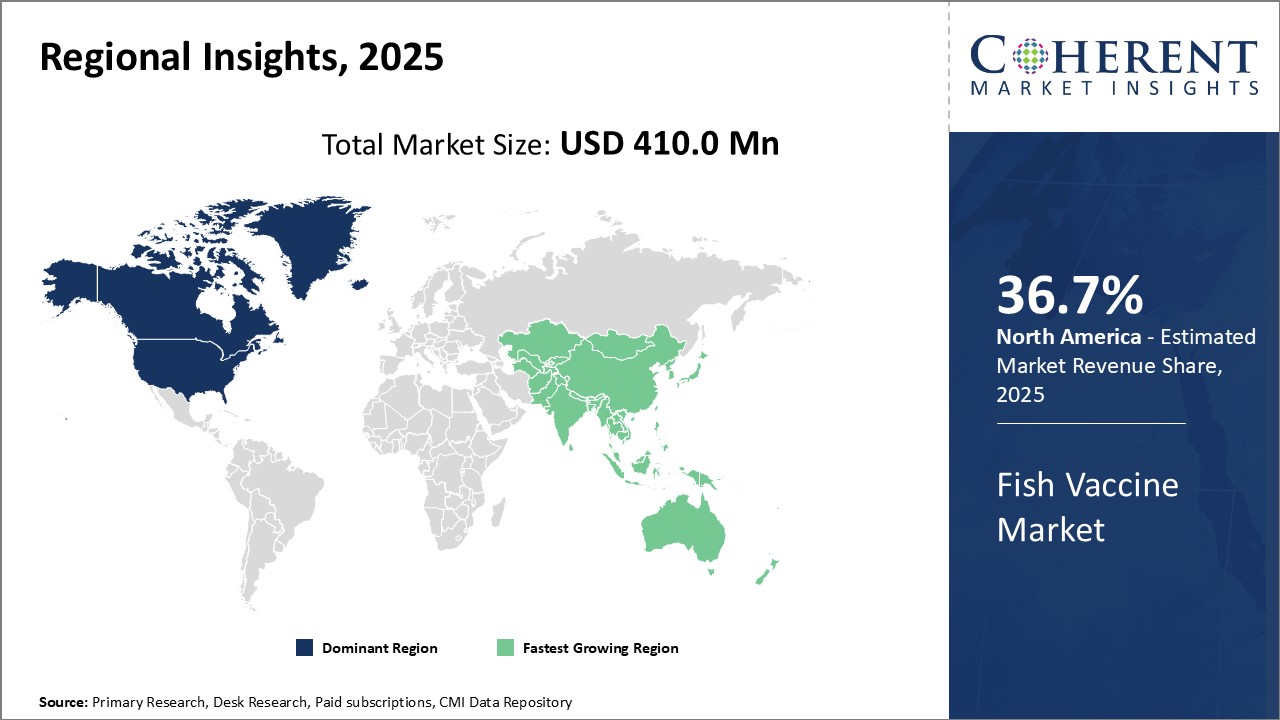Global fish vaccine market is estimated to be valued at USD 410.0 million in 2025 and is expected to reach USD 764.6 million by 2032, exhibiting a compound annual growth rate (CAGR) of 9.3% from 2025 to 2032.

Discover market dynamics shaping the industry: Download Free Sample
Rising cases of viral infections are encouraging fish farmers and government organizations to adopt preventive measures. Furthermore, increasing adoption of advanced vaccine administration techniques and growing aquaculture industry can boost demand for high quality and effective fish vaccines. However, high vaccination cost and lack of infrastructure and awareness in developing nations can hamper the market growth. Increasing R&D investment by major players for development of novel vaccines and growing consumer preference for safe seafood are expected to create lucrative opportunities for the fish vaccine market in the near future.
Global Aquaculture Boom
Rising demand for fish and other seafood products across the world has led to tremendous growth in commercial aquaculture industry in the past few years. Due to growing world population and increased seafood consumption, farmed fish production needs to keep pace to satisfy this demand. Many countries and private firms have extensively invested in developing commercial fish farming operations to boost fish yields. Salmon, carp, tilapia, shrimp and other popular varieties are now extensively cultivated in fish farms and ponds on a large industrial scale. However, intensive aquaculture increases risk of diseases that can spread rapidly and devastate entire stocks, if left uncontrolled. Vaccines have emerged as a critical tool for fish farmers to immunize their stocks and minimize losses from endemic diseases. As the aquaculture sector expands to new geographies and scales new heights to meet seafood demand, the dependence on reliable fish health management solutions including vaccines will increase substantially.

Get actionable strategies to beat competition: Download Free Sample
Changing Disease Dynamics
Climate change alters environmental conditions in unpredictable ways which can influence the epidemiology of infectious diseases. Rising water temperatures and other shifts in weather patterns may enable certain fish pathogens to spread more easily. Moreover, as fish farming intensifies through higher stocking densities, greater transboundary trade in live fish, and more stress on cultured stocks, these changes can render populations more vulnerable to outbreaks. Several emergent diseases have already appeared that threaten commercial stocks. For instance, piscine orthoreovirus was linked to largescale salmon losses in Chile and Norway. Koi herpesvirus also caused severe carotenoid disease in common and koi carp globally. As new pathogens emerge and existing ones mutate, fish breeders will require innovative vaccination strategies and solutions to protect their investments and bolster disease resilience in farmed fish populations. The evolving pathogen risk landscape emphasizes the necessity of reliable immunization as a fundamental tool for sustainable aquaculture worldwide.
Key Takeaways from Analyst:
Global fish vaccine market can witness growth in the near future. As the consumption of fish continues to rise worldwide due to growing population and health awareness, there will be huge demand for fish vaccine to counter various diseases prevalent in the aquaculture industry. Rising demand for seafood and emergence of zoonotic fish diseases can drive the fish vaccine market growth globally. However, stringent regulations surrounding vaccine development and high R&D costs associated with the vaccine development can hamper the market growth during the forecast period.
Regions like Asia Pacific and Latin America hold immense potential for market expansion owing to rising seafood trade and growing acceptance of preventive healthcare among fish farmers. Within Asia Pacific, markets in China, India, and other Southeast Asian nations are expected to generate sizable revenues for fish vaccine manufacturers due to the region's dominant position in global fish production. North America and Europe will continue dominating the developmental activities for advanced vaccine products. Viral and bacterial vaccines are likely to witness higher uptake against economically important diseases such as Vibriosis and Streptococcosis.
Rising focus on sustainable aquaculture practices and formulation of effective regional immunization programs can present lucrative opportunities for stakeholders. Leading players should strengthen their distribution networks across fast-developing regions and invest in R&D.
Market Challenges: Stringent regulatory approvals.
Strict regulations surrounding the development and use of antibiotics and antimicrobials in aquaculture can hamper the market growth. The high cost of R&D for new vaccines can also pose challenges for market growth. Maintaining cold chain logistic and distribution also poses difficulties in many markets. Sustainable and environment-friendly practices call for alternative measures to antibiotics.
Market Opportunities: Booming aquaculture industry
Rising fish consumption globally and booming aquaculture industry, the demand for vaccines is surging to prevent disease outbreak and maintain good health of farmed fish. Advances in vaccine development technology to produce efficacious yet cost-effective vaccines will promote their greater usage. Many new markets remain untapped which can be further developed.

Discover high revenue pocket segments and roadmap to it: Download Free Sample
Insights, By Vaccine Type: Efficacy and Prevention from Severe Diseases
In terms of vaccine type, inactivated vaccine segment is estimated to contribute the highest market share of 45.6% in 2025, owing to its high efficacy and ability to prevent severe diseases. Inactivated vaccines are rendered non-infectious through chemical or physical means while still retaining their immunogenic properties. These stimulate strong protective immune responses in fish without causing the disease. This provides fish robust and long-lasting protection against the target pathogens. Inactivated vaccines have been found to be more effective than live attenuated vaccines in preventing mortality and outbreaks from various bacterial and viral infections. Their inability to replicate also makes them safe for fish of all ages and health conditions. The high safety and efficacy profile of inactivated vaccines has increased their demand from fish farmers looking to minimize losses from diseases.
Insights By Indication: High Prevalence and Mortality Rates
In terms of indication, furunculosis segment is estimated to contribute the highest market share of 26% due to the severe impact and widespread prevalence of Aeromonas salmonicida. Furunculosis, commonly known as fish tuberculosis, is caused by A. salmonicida bacteria. It affects various cold-water fish species including salmon and trout. The disease has high mortality rates, sometimes killing entire population stocks. Left unchecked, it can devastate fish farms and wild fisheries. With no effective treatment available, vaccination is critical for controlling outbreaks and reducing economic losses. The development of improved furunculosis vaccines has been critical in establishing sustainable aquaculture industries globally. Growing aquaculture production can boost demand for furunculosis vaccines.
Insights, By Route of Administration- Ease of Administration and Mass Immunization
In terms of route of administration, injection segment is estimated to contribute the highest market share of 60.5% in 2025 , owing to the advantages it offers over other methods. While immersion and spray may allow mass treatment, injection ensures precise delivery of the right vaccine dose for optimal immune response in individual fish. It also leads to faster protection against diseases. The hypodermic injection technique is well-established in the aquaculture industry, allowing rapid vaccination of large numbers of fish. Injection vaccines are simple to administer and does not require specialized equipment. These achieve higher immune response levels as compared to immersion/spray when vaccinating high-value fish. With its targeted delivery and superior immunization outcomes, injection will remain a preferred administration route.

Need a Different Region or Segment? Download Free Sample
North America has been leading the global fish vaccine market, accounting for over 36.7%% of total transplants worldwide last year. The region's dominance is attributed to its advanced transplant centers, supportive reimbursement policies, and increasing awareness. The U.S. alone holds a market twice the size of any other country. Key medical device companies in North America invest heavily in research and development, ensuring continuous innovation in immunosuppressants, organ preservation solutions, and diagnostic tools for transplants. The region also imports organs due to a demand-supply imbalance.
However, Asia Pacific has emerged as the fastest-growing market due to rising chronic kidney disease incidences, growing incomes, and government initiatives to boost organ donation. China, in particular, has witnessed increase in transplants due to efforts to enhance local production, change donation rules, and increase affordability. This has attracted global medical technology firms to invest in partnerships and local manufacturing in China, reflecting the region's promising growth prospects.
Fish Vaccine Market Report Coverage
| Report Coverage | Details | ||
|---|---|---|---|
| Base Year: | 2024 | Market Size in 2025: | USD 410.0 Mn |
| Historical Data for: | 2020 To 2024 | Forecast Period: | 2025 To 2032 |
| Forecast Period 2025 to 2032 CAGR: | 9.3% | 2032 Value Projection: | USD 764.6 Mn |
| Geographies covered: |
|
||
| Segments covered: |
|
||
| Companies covered: |
Merck Animal Health (MSD Animal Health), Zoetis, Elanco, Virbac, HIPRA, Veterquímica S.A., Tecnovax, Phibro Animal Health Corporation, Ridgeway Biologicals Ltd., Nisseiken Co., Ltd., Aquatic Animal Health Ltd, Ictyogroup, Benchmark Holdings plc, Vaxxinova, Alpha Biotech Ltd., Vallee S.A., Ringpu Biology, Nippon Zenyaku Kogyo Co., Ltd., Chengdu Tech-bank Biological Products, Weiyuan Gene Tech |
||
| Growth Drivers: |
|
||
| Restraints & Challenges: |
|
||
Uncover macros and micros vetted on 75+ parameters: Get instant access to report
*Definition: Global fish vaccine market consists of vaccines that prevent bacterial and viral infections in fish. The vaccines help protect farmed fish and promote their growth and survival. Major fish-producing nations are driving the market as these aim to meet the rising global demand for fish and seafood in a sustainable manner. The market has witnessed steady growth over the past few years due to increasing fish farming activities and greater awareness among fish farmers about the benefits of vaccination. Advancements in vaccine technology have also contributed to the market expansion.
Share
Share
About Author
Nikhilesh Ravindra Patel is a Senior Consultant with over 8 years of consulting experience. He excels in market estimations, market insights, and identifying trends and opportunities. His deep understanding of the market dynamics and ability to pinpoint growth areas make him an invaluable asset in guiding clients toward informed business decisions. He plays a instrumental role in providing market intelligence, business intelligence, and competitive intelligence services through the reports.
Missing comfort of reading report in your local language? Find your preferred language :
Transform your Strategy with Exclusive Trending Reports :
Frequently Asked Questions
Joining thousands of companies around the world committed to making the Excellent Business Solutions.
View All Our Clients